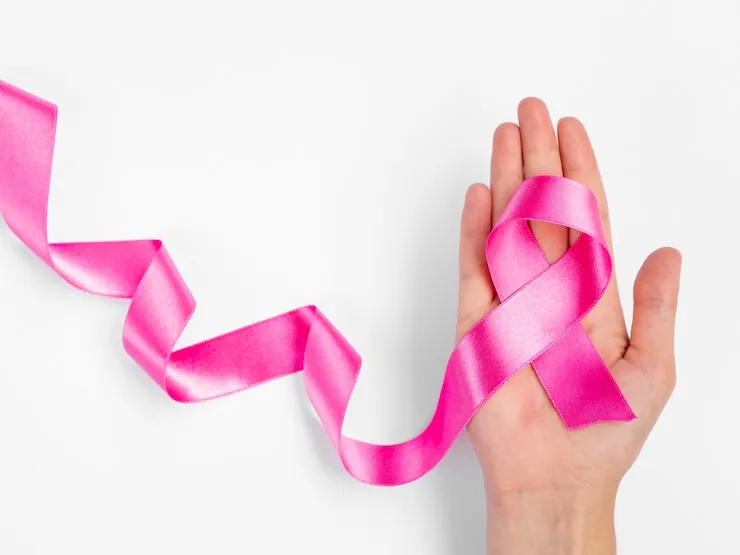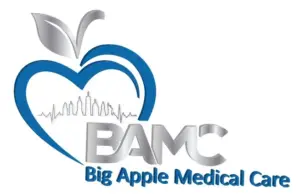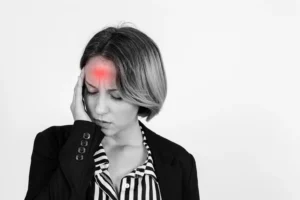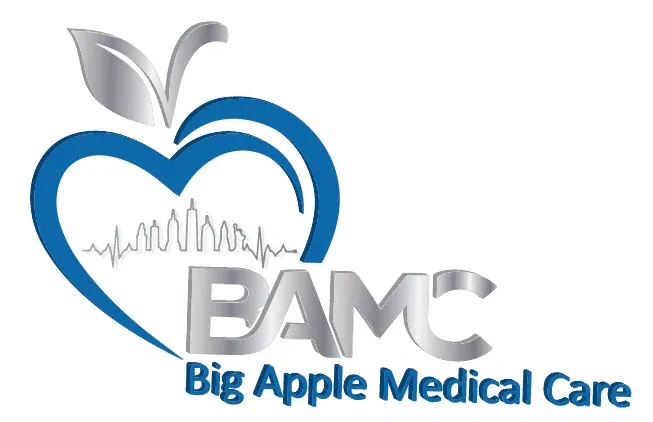How to Detect Early Signs of Breast Cancer?

Breast cancer remains one of the most common cancers affecting women worldwide, with early detection playing a crucial role in successful treatment outcomes. Understanding the signs and symptoms can literally save lives, as survival rates are significantly higher when the disease is caught in its initial stages.
Regular self-examinations and professional screenings are essential components of early breast cancer detection, with warning signs including lumps, skin changes, nipple discharge, and breast pain or swelling. These symptoms don’t automatically indicate cancer, but they should prompt a medical consultation without delay.
Being proactive about breast health involves understanding your personal risk factors and maintaining scheduled mammograms or other imaging tests as recommended by healthcare professionals. Many people have successfully navigated breast cancer diagnoses through vigilance and timely medical intervention.
Understanding Early Signs and Symptoms
Early detection of breast cancer significantly improves treatment outcomes and survival rates. Recognizing changes in your breast tissue requires regular self-examination and awareness of what constitutes abnormal changes.
Common Early Warning Signs
A lump or thickening in the breast is the most common sign of breast cancer. These lumps are typically painless, hard, and have irregular edges, though not all lumps with these characteristics are cancerous.
Skin changes such as dimpling, puckering, or redness may indicate inflammatory breast cancer. This rare but aggressive form often doesn’t present with the typical lump.
Nipple changes are another important indicator. These include nipple discharge (especially if bloody), nipple retraction (turning inward), or scaling/flaking of the nipple skin.
Unexplained breast pain that persists and isn’t related to your menstrual cycle deserves medical attention. While most breast pain isn’t cancer-related, consistent, localized pain shouldn’t be ignored.
Recognizing Changes in the Breast
Size and shape changes in one breast compared to the other can signal a problem. While natural asymmetry is normal, new or increasing asymmetry warrants investigation.
Swelling of part or all of the breast, even without a distinct lump, may indicate inflammatory changes. This could appear as warmth, redness, or a thickened texture of the skin.
Changes in the breast’s texture, such as feeling unusually firm or developing visible veins that weren’t previously noticeable, should prompt medical consultation. These changes might reflect increased blood flow to feed a growing tumor.
Monthly self-examinations help you become familiar with your normal breast tissue. Perform these after your menstrual period when breasts are least likely to be swollen or tender.
Differentiating Between Benign and Cancerous Breast Conditions
Most breast lumps (about 80%) are benign. Fibrocystic changes, cysts, and fibroadenomas are common non-cancerous conditions that can cause lumps or pain.
Benign lumps tend to be smooth, round, and mobile when pressed. They might feel rubbery or fluid-filled rather than hard and may change with the menstrual cycle.
Cancerous lumps typically feel firm, irregular in shape, and fixed to surrounding tissue. They generally don’t change with hormonal fluctuations and may grow over time.
If you discover any breast abnormality, consult a healthcare provider promptly. Professional examination, possibly including imaging tests like mammograms or ultrasounds, is essential for accurate diagnosis.
Early-stage breast cancer often has no pain symptoms, which makes regular screening crucial. Follow recommended guidelines for mammograms based on your age and risk factors.
Approaches to Early Detection
Early detection of breast cancer significantly improves treatment outcomes and survival rates. Several proven methods work together to help identify breast cancer in its earliest stages when it’s most treatable.
Breast Self-Exam and Awareness
Breast self-examination (BSE) involves regularly checking your breasts for changes in appearance or texture. Women should become familiar with how their breasts normally look and feel to more easily notice changes.
Watch for symptoms such as lumps, thickening, swelling, dimpling, skin irritation, or nipple abnormalities. Breast cancer may cause different signs in different women, and some women experience no symptoms at all.
The best time to perform a BSE is a few days after your period ends when breasts are less tender. For those who don’t menstruate, choose a consistent day each month.
While BSE alone isn’t sufficient for early detection, it creates awareness of changes in breast tissue that might warrant medical attention.
Clinical Breast Examination
A clinical breast exam (CBE) is a physical examination of the breast performed by a healthcare professional. The examiner checks for abnormalities in the breast tissue and surrounding areas.
During a CBE, the doctor or nurse will inspect the breasts visually for asymmetry, dimpling, or unusual discharge. They will then use their fingers to feel for lumps or other changes in the breast tissue, including the area under the arms.
Most medical organizations recommend clinical breast exams every 1-3 years for women in their 20s and 30s, and annually for women 40 and older. These exams can detect abnormalities that may be missed during self-exams.
CBEs complement other screening methods and are particularly valuable for identifying changes in breast ducts and tissues that require further evaluation.
Screening with Mammograms and Imaging
Mammography remains the gold standard for breast cancer screening. This specialized x-ray of the breast can detect cancer up to two years before a lump can be felt.
For women at average risk, annual or biennial mammograms typically begin at age 40 or 50, depending on the guidelines followed. Women with higher risk factors may need to start screening earlier or undergo more frequent examinations.
Additional imaging technologies include:
- Digital breast tomosynthesis (3D mammography): Creates multiple images of breast tissue for better visualization
- Ultrasound: Often used as a complementary tool for women with dense breast tissue
- MRI: Recommended for high-risk individuals or to further investigate suspicious findings
These screening tools can detect breast cancer early, even before symptoms appear. The sensitivity of mammograms varies with age and breast density, detecting approximately 87% of breast cancers.
Types of Breast Cancer and Their Symptoms
Breast cancer manifests in several forms, each with distinct characteristics and warning signs. Understanding these variations helps with early detection and appropriate treatment planning.
Invasive and Non-Invasive Breast Cancers
Invasive ductal carcinoma (IDC) is the most common type, accounting for 70-80% of all breast cancers. It begins in the milk ducts and spreads to surrounding breast tissues. Signs include a lump that feels different from surrounding tissue, swelling, and skin changes.
Non-invasive breast cancers, also called carcinoma in situ, remain confined to their point of origin. Ductal carcinoma in situ (DCIS) stays within the milk ducts while lobular carcinoma in situ (LCIS) remains in the lobules.
These non-invasive cancers rarely cause noticeable symptoms and are typically discovered during mammograms as microcalcifications or abnormal areas of cell growth. Early detection of these pre-invasive conditions significantly improves treatment outcomes.
Inflammatory Breast Cancer
Inflammatory breast cancer (IBC) is a rare but aggressive form that accounts for 1-5% of all breast cancer cases. Unlike other types, IBC often doesn’t present as a distinct lump.
Key symptoms include:
- Rapid swelling or enlargement of the breast
- Skin redness covering more than one-third of the breast
- Dimpled skin resembling an orange peel (peau d’orange)
- Breast warmth and tenderness
- Nipple flattening or inversion
IBC progresses rapidly, often within weeks or months. Its symptoms can mimic mastitis or breast infection, leading to delayed diagnosis. Any persistent inflammatory symptoms warrant immediate medical evaluation, especially when antibiotics don’t resolve the condition.
Triple-Negative and Metastatic Breast Cancer
Triple-negative breast cancer lacks receptors for estrogen, progesterone, and HER2 protein, making it harder to treat with hormone therapies. It tends to grow and spread faster than other types and is more common in women under 40, Black women, and those with BRCA1 mutations.
Metastatic breast cancer (Stage IV) has spread beyond the breast to distant organs. Common sites include bones, lungs, liver, and brain. Symptoms vary based on affected organs:
- Bone pain or fractures (bone metastasis)
- Shortness of breath (lung involvement)
- Jaundice or abdominal pain (liver metastasis)
- Headaches, seizures, or vision changes (brain metastasis)
Early detection through regular screenings remains crucial as treatment options and survival rates improve with earlier diagnosis.
Breast Cancer in Specific Populations
Male breast cancer accounts for about 1% of all breast cancers. The most common symptom is a painless lump or thickening in the breast tissue, often near the nipple. Men typically receive diagnosis at later stages due to lower awareness.
Breast cancer during pregnancy presents unique challenges for diagnosis and treatment. Hormonal changes and increased breast density can mask symptoms. Any persistent breast changes should be evaluated promptly.
Paget’s disease of the breast is a rare form that affects the nipple and areola. Symptoms include redness, scaliness, burning sensation, and nipple discharge. It’s often associated with underlying ductal carcinoma.
Genetic factors significantly impact risk in certain populations. Those with BRCA1/BRCA2 mutations face substantially higher lifetime risk and may benefit from more intensive screening protocols.
When to Seek Medical Advice and Diagnosis
Recognizing when to consult healthcare professionals about breast changes is crucial for early detection and improved outcomes. Timing of medical intervention can significantly impact breast cancer survival rates, particularly when symptoms are addressed promptly and thoroughly.
Consulting Healthcare Professionals
Contact a healthcare provider immediately if you notice any breast changes, especially a new lump or thickening that feels different from surrounding tissue. Don’t delay seeking medical attention for nipple discharge (particularly if bloody), skin changes like redness or dimpling, or persistent breast pain.
Most breast changes are not cancer, but only a medical evaluation can determine this. During your appointment, your doctor will perform a clinical breast exam and may order diagnostic tests like mammograms, ultrasounds, or MRIs based on your symptoms and risk factors.
A breast biopsy may be necessary if imaging tests show suspicious areas. This procedure removes a small sample of tissue for laboratory analysis and is the only definitive way to confirm a breast cancer diagnosis.
Role of Family History and Risk Factors
Family history significantly impacts breast cancer risk. Women with first-degree relatives (mother, sister, daughter) diagnosed with breast cancer have approximately twice the risk compared to those without this history.
Other factors that increase the risk of breast cancer include:
- Age (risk increases with age)
- Personal history of breast conditions
- Previous radiation exposure
- Beginning menstruation before age 12
- Starting menopause after 55
- Having dense breasts
- Genetic mutations (BRCA1 and BRCA2)
The American Cancer Society recommends women at higher risk discuss screening options with their doctors. This may include earlier or more frequent mammograms, MRIs, or genetic testing.
Understanding your personal risk profile helps determine appropriate surveillance and preventive measures.
Support and Resources
A breast cancer diagnosis can be overwhelming. The National Cancer Institute offers comprehensive information about diagnosis and treatment options to help patients make informed decisions.
Support groups provide emotional assistance and practical advice from others who have experienced similar challenges. Many hospitals and community organizations offer these services at no cost.
Financial resources are available through organizations like the American Cancer Society to help with treatment costs and related expenses. Patient navigators can guide individuals through the complex healthcare system.
Online tools can help track symptoms and organize medical information. Digital platforms offer educational resources about breast health and connect patients with appropriate specialists based on their specific needs.
Frequently Asked Questions
Early detection of breast cancer significantly improves treatment outcomes and survival rates. The following questions address common concerns about recognizing symptoms and performing self-examinations.
What are the initial symptoms to look out for as possible indicators of breast cancer?
Initial symptoms may include a new lump in the breast or armpit, thickening or swelling of part of the breast, skin irritation or dimpling, breast or nipple pain, nipple retraction, redness or flakiness in the nipple area, and nipple discharge other than breast milk.
Which at-home techniques can be employed for the early detection of breast cancer?
Regular breast self-examinations (BSE) should be performed monthly, preferably 3-5 days after menstruation when breasts are least tender and lumpy. Include visual inspection before a mirror with arms at sides, overhead, and on hips, followed by manual examination while lying down and in the shower.
Can breast cancer be detected early by examining skin changes on the breast surface?
Yes, skin changes such as dimpling (resembling orange peel texture), unexplained redness, unusual warmth, visible vein changes, or skin that appears thicker can indicate potential breast cancer beneath the surface.
What does the three finger test entail and how does it relate to detecting breast cancer?
The three finger test involves using the pads of three middle fingers to examine breast tissue in circular motions with varying pressure to detect abnormalities. This systematic approach ensures thorough coverage of all breast tissue, including the often-overlooked upper outer quadrant.
Which symptoms could suggest the advancement of breast cancer beyond its early stages?
Advanced breast cancer symptoms may include persistent breast pain, swelling in the arm or hand, bone pain, weight loss, weakness or fatigue, visible skin ulceration, and shortness of breath if cancer has spread to the lungs.
What steps might one take to reduce the risk of developing breast cancer?
Risk reduction strategies include maintaining a healthy weight, regular exercise, limiting alcohol consumption, avoiding hormone replacement therapy when possible, breastfeeding if able, and attending regular screenings at specialized facilities like Big Apple Medical Care that offer comprehensive breast health services.






